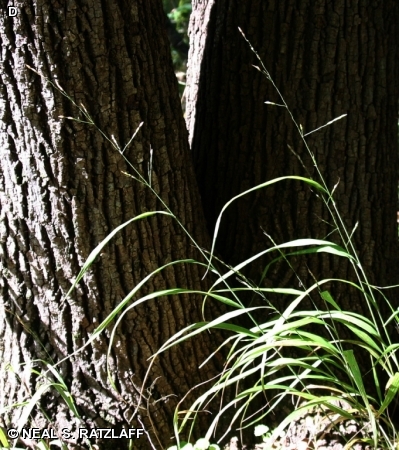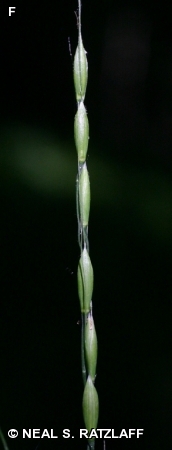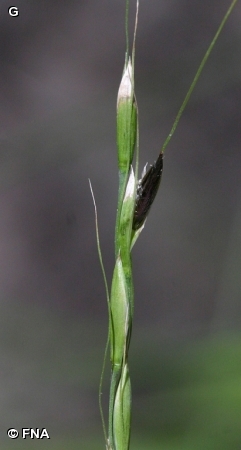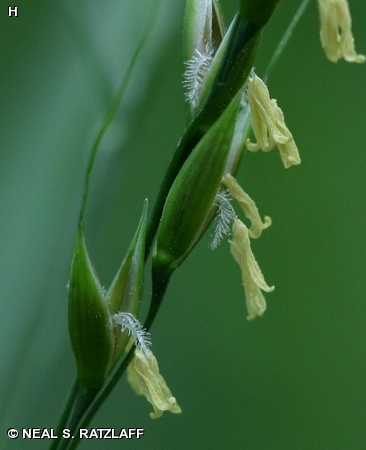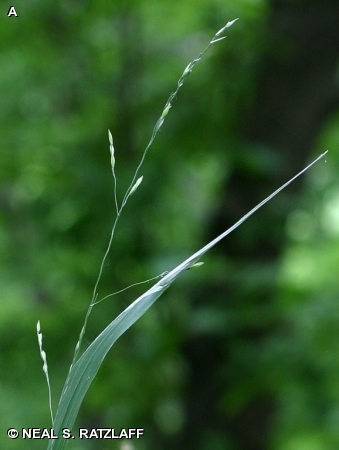
A native perennial growing in small bunches. Thin, erect-to-arching stems 20-36 inches tall bear open, sparsely branched panicles. Lower leaves are quite small, but upper ones are better developed, measuring 6-12 inches long and up to 1/2 inch wide. Leaf blades are twisted 180 degrees at the base causing the true upper side of the leaf to rest underneath the bottom side (E). The mature rice-like seeds, each bearing a long awn, are aligned along the long axis of the panicle branches resembling a string of elongated pearls (F) If one peels back the outer bracts or glumes, the black inner covering of the seed known as the lemma is exposed (G). It is the lemma that bears the conspicuous long awn and its black color, of course, is responsible for the common name of this grass. In flower this plant bears long yellow anthers and white stigmas (H).
Upland woods. It takes a real hike to see this beautiful upland grass at Fontenelle Forest where it is uncommon on the ridges of Oak and Prairie Trails. It is rare (and remote) at Neale Woods where a small loosely grouped colony has been found in only one site on west Maidenhair Trail.
Whitegrass (Leersia virginica) has a similar open panicle and may also be found in the uplands. Unlike Black-seed Ricegrass, it is a reclining plant with weak stems and conspicuous white hairs on the nodes.
The content of NatureSearch is provided by dedicated volunteer Naturalists of Fontenelle Forest who strive to provide the most accurate information available. Contributors of the images retain their copyrights. The point of contact for this page is: Neal Ratzlaff.



